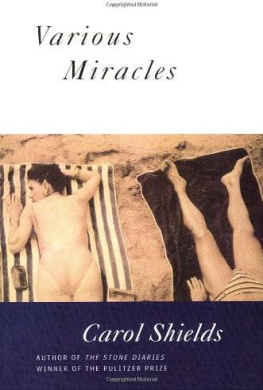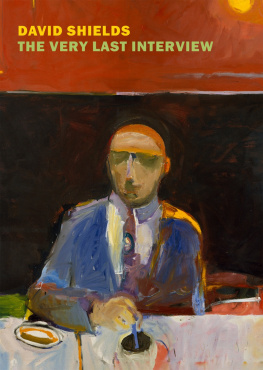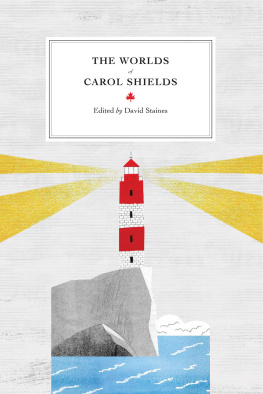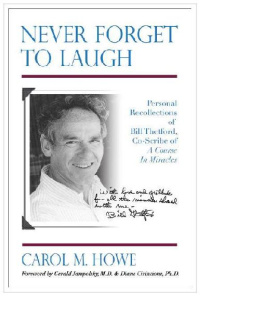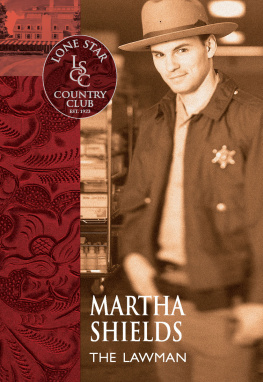Carol Shields - Various Miracles
Here you can read online Carol Shields - Various Miracles full text of the book (entire story) in english for free. Download pdf and epub, get meaning, cover and reviews about this ebook. year: 1996, publisher: Vintage Canada, genre: Art. Description of the work, (preface) as well as reviews are available. Best literature library LitArk.com created for fans of good reading and offers a wide selection of genres:
Romance novel
Science fiction
Adventure
Detective
Science
History
Home and family
Prose
Art
Politics
Computer
Non-fiction
Religion
Business
Children
Humor
Choose a favorite category and find really read worthwhile books. Enjoy immersion in the world of imagination, feel the emotions of the characters or learn something new for yourself, make an fascinating discovery.
- Book:Various Miracles
- Author:
- Publisher:Vintage Canada
- Genre:
- Year:1996
- Rating:4 / 5
- Favourites:Add to favourites
- Your mark:
- 80
- 1
- 2
- 3
- 4
- 5
Various Miracles: summary, description and annotation
We offer to read an annotation, description, summary or preface (depends on what the author of the book "Various Miracles" wrote himself). If you haven't found the necessary information about the book — write in the comments, we will try to find it.
Various Miracles — read online for free the complete book (whole text) full work
Below is the text of the book, divided by pages. System saving the place of the last page read, allows you to conveniently read the book "Various Miracles" online for free, without having to search again every time where you left off. Put a bookmark, and you can go to the page where you finished reading at any time.
Font size:
Interval:
Bookmark:

Carol Shields is an internationally known author who has won many awards for her novels and short stories. Her most recent novel, The Stone Diaries, was the winner of the 1995 Pultizer Prize, a National Book Critics Circle Award, the 1993 Governor Generals Award for Fiction, the McNally Robinson Award for Manitoba Book of the Year and was also short-listed for the Booker Prize. Her other books include Happenstance, The Republic of Love, Swann: A Mystery, Various Miracles, The Box Garden and The Orange Fish. Shields lives and works in Winnipeg.

SEVERAL OF THE MIRACLES that occurred this year have gone unrecorded.
Example: On the morning of January 3, seven women stood in line at a lingerie sale in Palo Alto, California, and by chance each of these women bore the Christian name Emily.
Example: On February 16 four strangers (three men, one woman) sat quietly reading on the back seat of the number 10 bus in Cincinnati, Ohio; each of them was reading a paperback copy of Smileys People.
On March 30 a lathe operator in a Moroccan mountain village dreamed that a lemon fell from a tree into his open mouth, causing him to choke and die. He opened his eyes, overjoyed at being still alive, and embraced his wife who was snoring steadily by his side. She scarcely stirred, being reluctant to let go of a dream she was dreaming, which was that a lemon tree had taken root in her stomach, sending its pliant new shoots upwards into her limbs. Leaves, blossoms and finally fruit fluttered in her every vein until she began to tremble in her sleep with happiness and intoxication. Her husband got up quietly and lit an oil lamp so that he could watch her face. It seemed to him hed never really looked at her before and he felt how utterly ignorant he was of the spring that nourished her life. Now she lay sleeping, dreaming, her face radiant. What he saw was a mask of happiness so intense it made him fear for his life.
On May 11, in the city of Exeter in the south of England, five girls (aged fifteen to seventeen) were running across a playing field at ten oclock in the morning as part of their physical education program. They stopped short when they saw, lying on the broad gravel path, a dead parrot. He was grassy green in color with a yellow nape and head, and was later identified by the girls science mistress as Amazona ochrocephala. The police were notified of the find and later it was discovered that the parrot had escaped from the open window of a house owned by a Mr. and Mrs. Ramsay, who claimed, while weeping openly, that they had owned the parrot (Miguel by name) for twenty-two years. The parrot, in fact, was twenty-five years old, one of a pair of birds sold in an open market in Marseilles in the spring of 1958. Miguels twin brother was sold to an Italian soprano who kept it for ten years, then gave it to her niece Francesca, a violinist who played first with the Netherlands Chamber Orchestra and later with the Chicago Symphony. On May 11 Francesca was wakened in her River Forest home by the sound of her parrot (Pete, or sometimes Pietro) coughing. She gave him a dish of condensed milk instead of his usual whole-oats-and-peanut mixture, and then phoned to say she would not be able to attend rehearsal that day. The coughing grew worse. She looked up the name of a vet in the Yellow Pages and was about to dial when the parrot fell over, dead in his cage. A moment earlier Francesca had heard him open his beak and pronounce what she believed were the words a ne fait rien.
On August 26 a man named Carl Hallsbury of Billings, Montana was wakened by a loud noise. My God, were being burgled, his wife, Marjorie, said. They listened, but when there were no further noises, they drifted back to sleep. In the morning they found that their favorite little watercolora pale rural scene depicting trees and a winding road and the usual arched bridgehad fallen off the living-room wall. It appeared that it had bounced onto the cast-iron radiator and then ricocheted to a safe place in the middle of the living-room rug. When Carl investigated he found that the hook had worked loose in the wall. He patched the plaster methodically, allowed it to dry, and then installed a new hook. While he worked he remembered how the picture had come into his possession. He had come across it hanging in an emptied-out house in the French city of St. Brieuc, where he and the others of his platoon had been quartered during the last months of the war. The picture appealed to him, its simple lines and the pale tentativeness of the colors. In particular, the stone bridge caught his attention since he had been trained as a civil engineer (Purdue, 1939). When the orders came to vacate the house late in 1944, he popped the little watercolor into his knapsack; it was a snug fit, and the snugness seemed to condone his theft. He was not a natural thief but already he knew that life was mainly a matter of improvisation. Other returning soldiers brought home German helmets, strings of cartridge shells and flags of various sorts, but the little painting was Carls only souvenir. And his wife, Marjorie, is the only one in the world who knows it to be stolen goods; she and Carl belong to a generation that believes there should be no secrets between married couples. Both of them, Marjorie as much as Carl, have a deep sentimental attachment to the picture, though they no longer believe it to be the work of a skilled artist.
It was, in fact, painted by a twelve-year-old boy named Pierre Renaud who until 1943 had lived in the St. Brieuc house. It was said that as a child he had a gift for painting and drawing; in fact, he had a gift merely for imitation. His little painting of the bridge was copied from a postcard his father had sent him from Burgundy where hed gone to conduct some business. Pierre had been puzzled and ecstatic at receiving a card from his parent who was a cold, resolute man with little time for his son. The recopying of the postcard in water-colorslater Pierre saw all this clearlywas an act of pathetic homage, almost a way of petitioning his fathers love.
He grew up to become not an artist but a partner in the family leather-goods business. In the late summer he liked to go south in pursuit of sunshine and good wine, and one evening, August 26 it was, he and Jean-Louis, his companion of many years, found themselves on a small stone bridge not far from Tournus. This is it, he announced excitedly, spreading his arms like a boy, and not feeling at all sure what he meant when he said the words, This is it. Jean-Louis gave him a fond smile; everyone knew Pierre had a large capacity for nostalgia. But I thought you said youd never been here before, he said. Thats true, Pierre said, you are right. But I feel, herehe pointed to his heartthat Ive stood here before. Jean-Louis teased him by saying, Perhaps it was in another life. Pierre shook his head, No, no, no, and then, well, perhaps. After that the two of them stood on the bridge for some minutes regarding the water and thinking their separate thoughts.
On October 31, Camilla LaPorta, a Cuban-born writer, now a Canadian citizen, was taking the manuscript of her new novel to her Toronto publisher on Front Street. She was nervous; the publisher had been critical of her first draft, telling her it relied too heavily on the artifice of coincidence. Camilla had spent many months on revision, plucking apart the faulty tissue that joined one episode to another, and then, delicately, with the pains of a neurosurgeon, making new connections. The novel now rested on its own complex microcircuity. Wherever fate, chance or happenstance had ruled, there was now logic, causality and science.
Font size:
Interval:
Bookmark:
Similar books «Various Miracles»
Look at similar books to Various Miracles. We have selected literature similar in name and meaning in the hope of providing readers with more options to find new, interesting, not yet read works.
Discussion, reviews of the book Various Miracles and just readers' own opinions. Leave your comments, write what you think about the work, its meaning or the main characters. Specify what exactly you liked and what you didn't like, and why you think so.

